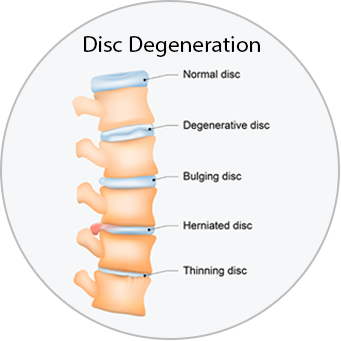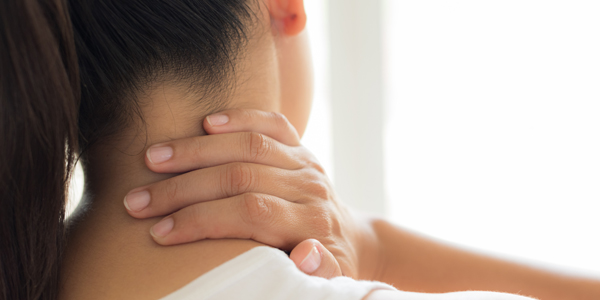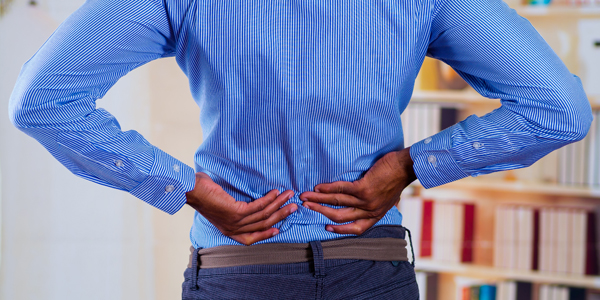Degenerative Disc Disease
Degenerative Disc Disease
What is Degenerative Disc Disease?
Degenerative disc disease occurs when the intervertebral discs between your vertebrae wear down and become painful.
Everyone experiences regular wear-and-tear in their intervertebral discs throughout their life, but not everyone experiences the pain associated with degenerative disc disease.
Causes | Symptoms | Treatment | Prevention
Where Can You Get Degenerative Disc Disease?
You can develop degenerative disc disease in three segments of the spine; the neck, mid back, and low back.
There are three types of degenerative disc disease associated with the areas of the spine, including:
Cervical Degenerative Disc Disease (Neck)
There are 6 discs in your cervical spine (neck), and as they wear down, they may cause pain and discomfort in the neck.
Thoracic Degenerative Disc Disease (Mid or Upper Back)
There are 12 discs in your thoracic spine (mid back) and as they wear down over time, they may cause pain and discomfort in your mid back.
Lumbar Degenerative Disc Disease (Low Back)
There are 5 discs in your lumbar spine (low back) and as they wear down over time, they may cause pain and discomfort in your low back
What is an Intervertebral Disc?
An intervertebral disc is a tough, fibrous disc between the vertebrae in your spine. They act as shock absorbers for your spine, and allow your spine the flexibility to bend and twist.
What Causes Degenerative Disc Disease?

As you age, your intervertebral discs degenerate naturally, due to regular wear and tear.
Specifically, the causes of degenerative disc disease at the spinal level are:
- Loss of fluid in your discs
- Tiny cracks and tears in the discs
- Inflammation of the discs
What are Risk Factors for Degenerative Disc Disease?
Risk factors for developing degenerative disc disease include:
- Trauma or injury to your spine
- Repetitive strain to your spine, such as a job requiring frequent heavy lifting
- Being overweight
- Increasing age
- Smoking
- Musculoskeletal imbalance, such as scoliosis
- Prolonged sitting
- Poor posture
What are the Signs and Symptoms of Degenerative Disc Disease?
Everyone experiences some level of degeneration to their intervertebral discs overtime, but not everyone will experience symptoms.
If they do, symptoms will typically include:
- Dull pain around the affected discs
- Stabbing pain after strenuous activity or strain on the spine
- Increased pain with movement, such as twisting or bending
- Difficulty moving and decreased range of motion
- Muscle tension or spasms
- Increased pain when sitting or standing for long periods
- In the case of cervical degenerative disc disease: a sharp, stabbing pain or weakness and tingling in the shoulders, arms or hands, known as cervical radiculopathy
- In the case of lumbar degenerative disc disease: a sharp, stabbing pain or weakness and tingling in the buttocks, hips or legs, known as lumbar radiculopathy
How is Degenerative Disc Disease Treated?
Mild degenerative disc disease can be treated at home and in a clinical setting.
To ease the pain associated with degenerative disc disease, you can:
- Rest
- Apply ice or moist heat
- Avoid activities
Moderate to severe levels of degenerative disc disease should be treated in a clinical setting. You may want to consult with a pt Health physiotherapist for a custom treatment plan to address your unique concerns.
Physiotherapy for Degenerative Disc Disease
A pt Health physiotherapist will assess your degenerative disc disease; depending on the location, cause and severity, treatment can include:
- Strengthening and range of motion exercises
- Manual therapy (joint and soft tissue mobilizations)
- Personalized exercise plan
- Active stretching
- Assistive devices to improve neck support, such as therapeutic pillows
- Functional retraining and activity modification
- Therapeutic ultrasound
- Heat and ice therapy
- Electrical stimulation
Can Degenerative Disc Disease Go Away on its Own?
Yes, mild cases of degenerative disc disease can resolve itself after home treatment. However, pain from degenerative disc disease is likely to reoccur without any activity modification.
Can You Prevent Degenerative Disc Disease?
Degeneration of your intervertebral discs is a natural part of aging, but you can take the following steps to avoid it becoming painful:
- Drink plenty of water
- Practice good posture
- Avoid staying in one position for too long
- Stretch regularly
- Maintain a healthy weight


